kuniga.me > NP-Incompleteness > Computer History Museum
Computer History Museum
07 Feb 2025
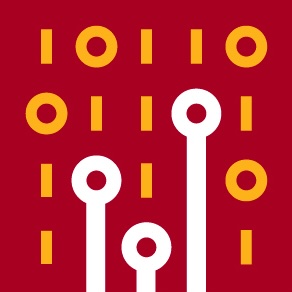
I’ve visited the Computer History Museum in Mountain View California several times over the years. After my last visit, I decided to write about it.
The museum is organized in multiple sections and are ordered more or less chronologically. For example, the first sections cover primitive computing machines (physical calculators, punch cards), then comes analog computers, mainframes, super computers, personal computers, computer games, mobile devices and finally the web.
In between there are sections dedicated to storage, computer graphics, AI and robotics.
Gallery
At the entrance there’s the early version of Waymo’s self-driving car:
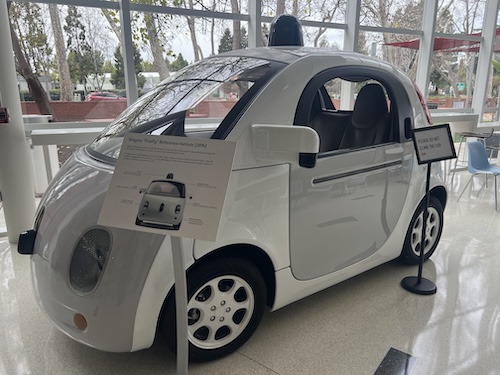
The first section is about mechanical computing devices. It showcases the Napier’s bones, a device from the 17th century for performing multiplication of large numbers. It was invented and named after the scottish John Napier, who also discovered (among others) the logarithm.
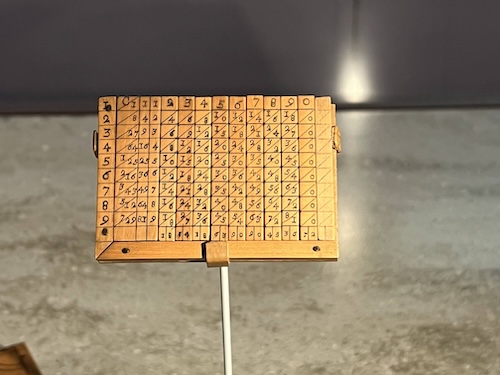
The Curta calculator is a neat device from 1948, developed by Curt Herzstark. This device also has an intriguing backstory: Curt was an Austrian of partial Jewish ancestry who was sent to a concentration camp, but the Nazis spared his life because he was known to be working on this device. The workings of the Curta is well described in this short Numberphile video.
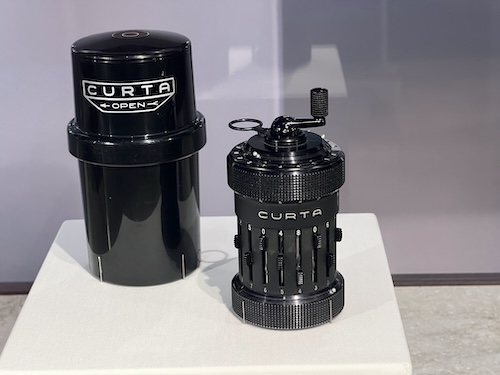
The Jacquard Machine is a machine that can be attached to a loom to manufacture patterns specified from a punchcard. On itself unrelated to computers, but the idea of using punchcards as input inspired early computers.
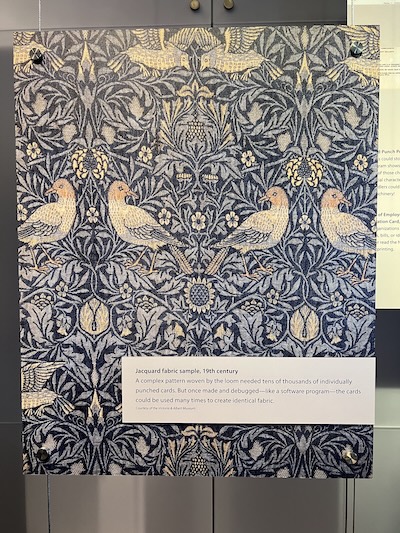
Herman Hollerith developed a an electromechanical machine to puncture holes in paper cards for the US Census. I had never heard of this machine but growing up in Brazil hollerith (spelled holerite in Portuguese) was how we called paper slips.
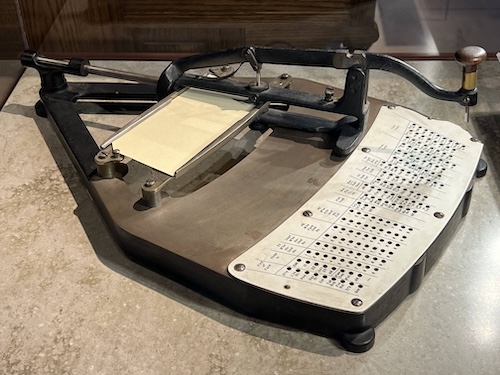
Another cool application of puncturing holes on paper is for data visualization. This Atlas from the Botanical society used punch card technology for distribution maps of species:
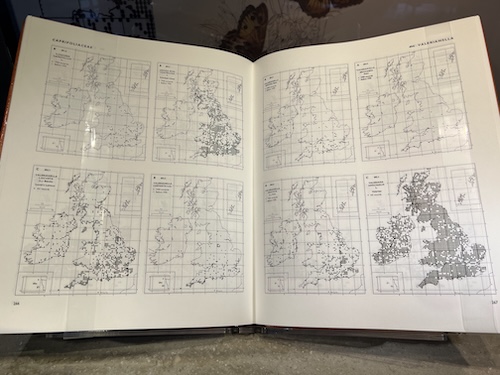
ENIAC, from 1945, stands for Electronic Numerical Integrator and Computer and is considered the first general-purpose digital computer. The museum has parts of it on display.
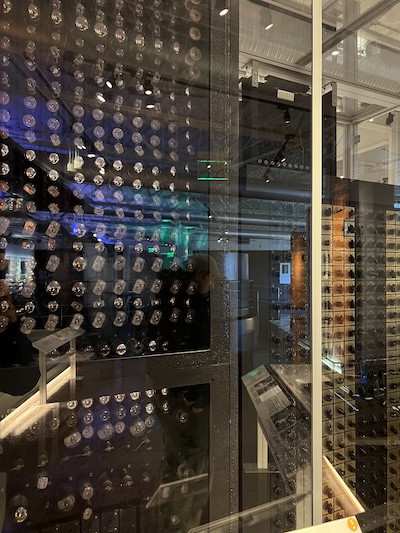
The Enigma machine was used by the German military during WWII. The messages were decoded by the allies with the help of Polish mathematicians. The decyphering of the messages is credited with the substiantial shortening of the war.
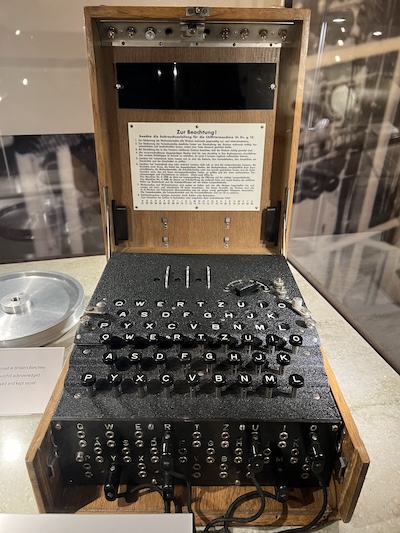
The IBM 305 RAMAC, standing for Random Access Method of Accounting and Control, is considered the first hard-disk drive and consisted of 50 24” inches disks, adding to a capacity of 3.75MB!
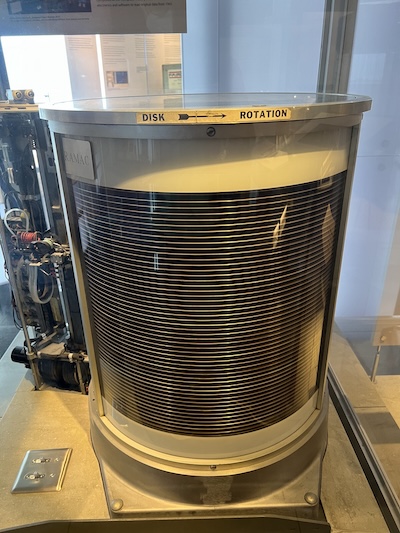
The IBM System/360 was a mainframe first released in 1964. The museum has the Model 30 on display. These mainframes are used as cases in the book Mythical Man-Month, since the author, Fred Brooks, was a project manager for this system.
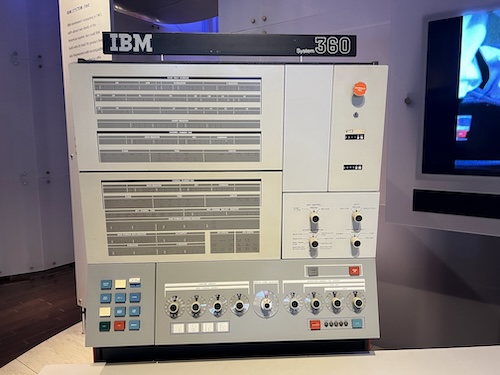
The Cray-1 was a super-computer designed by Seymour Cray and released in 1975. It was capable of 160MFLOPS (for comparison, nowadays a personal computer such as an Apple Macbook can do up to 320GFLOPS). It cost about 8 million USD in 1977 (equivalent to 40 million USD in 2023).
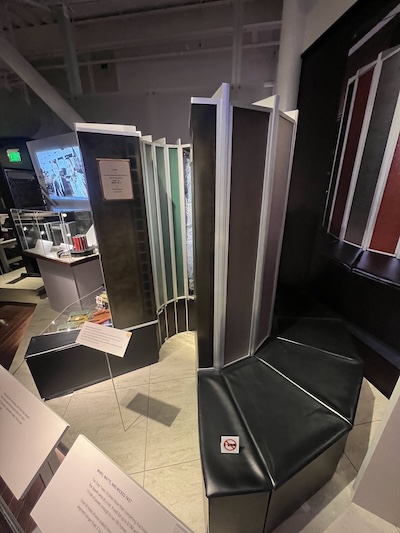
The Utah teapot is very famous 3D object in Computer Graphics. The museum has the original, which was bought by Martin Newell in a Utah department store.

The company Psion started as a sofware company but later entered the hardware market with the Psion Organizer. The Psion Series 3 Organizer is in display at the museum. The OS for the Psion Organizer was called EPOC and it was eventually renamed to Symbian, being adopted by many early smartphones.
I find it pretty intresting to see how things played out, with Symbian eventually losing to Android as the “generic” OS, and how things could have turned out differently.
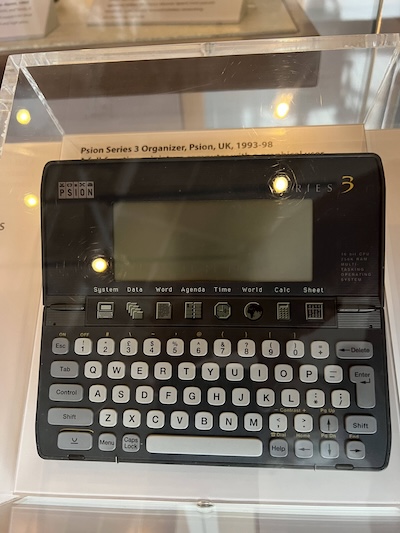
There’s a section of the museum on the opposite side of the reception which I think I have missed in all my previous visits. It has a gallery of random exhibits on technology, including more recent games such as World of Warcraft.
I was an avid (to put it nicely) player of Blizzard games such as Diablo, Starcraft and Warcraft (including DotA), but never got into World of Warcraft (luckily I guess). The museum has the actual hardware from a World of Warcraft server.
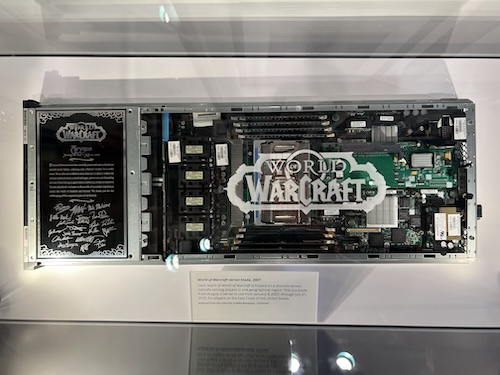
This section also has a copy of the robot Ameca, which I recall seeing online a few years back. It’s able to understand speech pretty well.
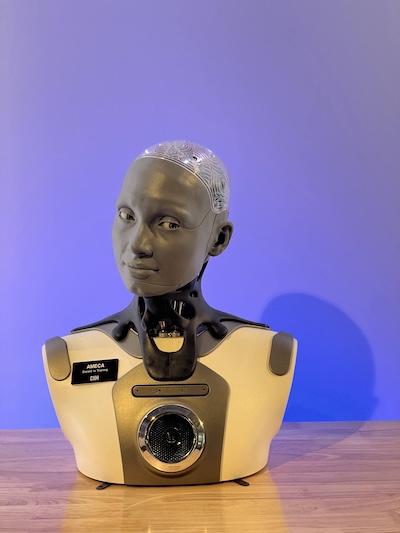
Conclusion
I believe this is my first post on what I call Nerd Tourism. I love visiting museums but most of them don’t fit in the usual theme of my blog, so I tend to document them in https://www.kuniga.me/amuseum/ instead.
I have visited some science museums such as the Lawrence Berkeley National Laboratory, the MIT Museum, Museum of Science and Industry in Chicago, The Tech Interactive in San Jose, the Exploratorium and the California Academy of Sciences in San Francisco. Each could be worth a post, but I never took the time to write one.
I also have other nerd spots in my to-go list, mainly in Europe. I hope to visit and post about them some day.
